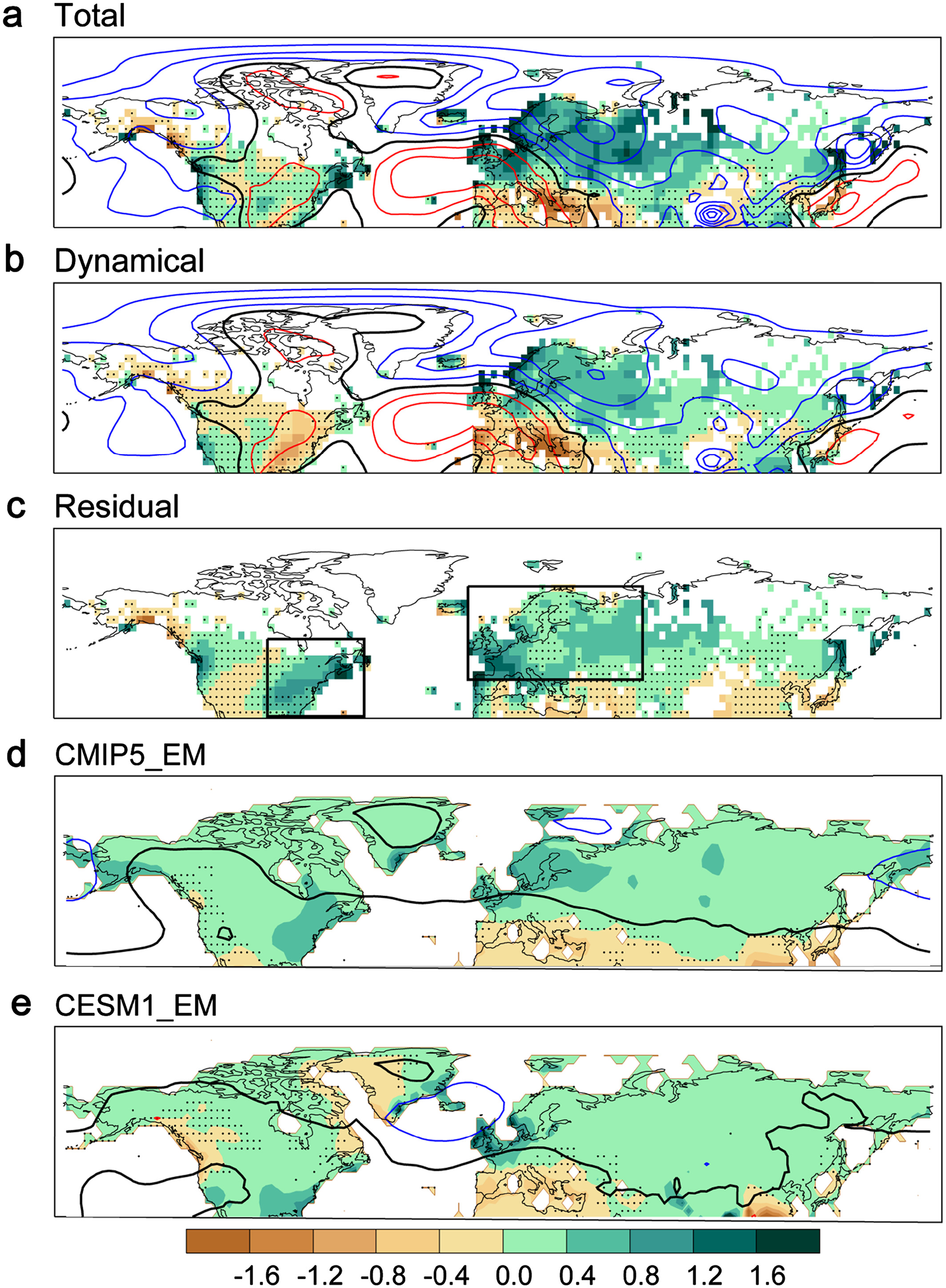Winter precipitation patterns across the Northern Hemisphere are shifting due to climate heating, a new paper reports.

A team led by researchers at the National Center for Atmospheric Research (NCAR) has isolated the effect of man-made climate change on winter precipitation across the Northern Hemisphere. They report that our lifestyle has significant impacts on wintertime rain and snowfall.
When it rains it pours
“I thought this was quite revealing,” said NCAR senior scientist Clara Deser, a co-author of the study. “Our research demonstrates that human-caused climate change has clearly affected precipitation over the past 100 years.”
The team used a novel approach to tease apart artificial and natural elements that affect the patterns of precipitation and their effects. The researchers drew on records and observations of precipitation and large-scale atmospheric circulation patterns, along with statistical techniques and computer climate simulations. In the end, they identified the amount of average monthly precipitation in specific regions of North American and Eurasia that fell as a result of human impact on the climate, rather than natural variability.
Rises in mean temperatures associated with human-caused emissions of greenhouse gas have noticeably increased wintertime precipitation over wide swathes of northern Eurasia and eastern North America since the 1920s, the team reports.
The findings can help to improve our understanding of how climate change can impact precipitation across the globe. Globally, precipitation is projected to increase by an average of 1-2% for each additional degree Celsius of increase in mean temperatures, because a warmer atmosphere holds more water vapor. Local changes, however, may make some regions become drier and others far wetter than they are today.
It’s not easy teasing apart man-made from artificial elements when it comes to precipitation, as this is affected by many local factors and conditions that can vary from day to day or year to year. In this chaotic setting, it’s virtually impossible to establish reliable long-term trends.
Previously, scientists relied on large numbers of climate model simulations to determine the influence of a changing climate on precipitation. In this present study, however, the team started with observed data. In essence, their approach can be summed up as: if you take away the precipitation caused by natural factors, and then compare that to what was recorded on the ground, you can tell how much of it can likely be attributed to human-driven changes in climate.

Image credits Ruixia Guo et al., 2019, AGU.
The approach used by the team is known as dynamical adjustment. It’s based on statistical techniques applied to observed data — the team used observations of large-scale circulation patterns in the atmosphere for every winter month from 1920 to 2015. Such circulation patterns occur independently of atmospheric greenhouse gas levels.
After crunching all the data, the team could estimate the average amount of precipitation that would be produced by a particular circulation pattern. They then compared these results to measured levels of precipitation to reveal the influence of climate change.
Northeastern North America, as well as a small part of northwestern North America, has experienced more precipitation due to man-made climate change, the team reports. Much of northwestern and north-central Eurasia fares similarly.
In contrast, parts of central and southwestern North America may have experienced drying, although not enough to offset natural variability, they add. Much of southern Eurasia is also experiencing drying as a result of climate change. However, the authors cautioned that their results for those regions were less pronounced and not statistically significant.
The team focused on winter because winter precipitation is driven by broad atmospheric patterns that are easier to see in the data than localized conditions that affect summer precipitation (such as soil moisture and individual thunderstorms), the team explains. The Northern Hemisphere simply has more and better-quality precipitation recordings, so they focused the study here.
The results fit with climate model simulations of human-caused changes in precipitation, which helps verify the models.
“Scientists previously turned to climate models for answers. Here, the climate models come in only at the end to confirm what we teased out of observations independently,” said NCAR scientist Flavio Lehner, a co-author of the study.
“I think this is the major scientific breakthrough of this work.”
Lehner and Deser used the same technique in a separate study published in Geophysical Research Letters last year, to show that recent drying in the U.S. Southwest is largely attributable to natural variability.
The paper “Human Influence on Winter Precipitation Trends (1921–2015) over North America and Eurasia Revealed by Dynamical Adjustment” has been published in the journal Geophysical Research Letters.


